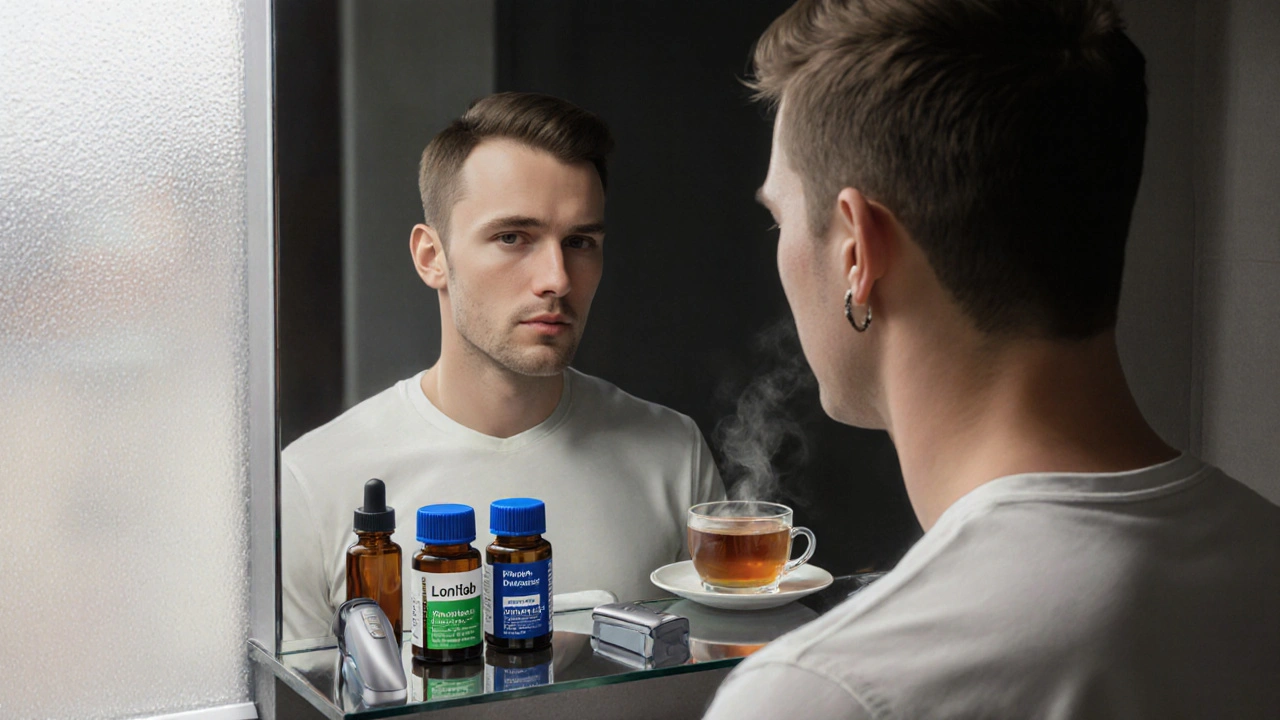Minoxidil Alternatives: Real Options for Faster Hair Growth
If you’ve tried minoxidil and got bored of the oily scalp or the daily routine, you’re not alone. Millions look for other ways to keep their hair thick without the hassle. The good news? There are several proven substitutes that target the same hair‑follicle pathways, and many are easier to use.
Oral Medications that Cut Hair Loss
Finasteride (Propecia) is the most common prescription pill for male‑pattern baldness. It blocks DHT, the hormone that shrinks follicles, and many users see noticeable regrowth after three months. Women can consider low‑dose spironolactone, which also reduces DHT but needs a doctor’s go‑ahead because of hormone effects. Both drugs require a prescription, but the once‑daily dose cuts down the time you spend applying something to your scalp.
Topical & Natural Choices You Can Try at Home
For those who want a non‑prescription route, several topical agents work well alongside or instead of minoxidil. Low‑level laser therapy (LLLT) devices, like combs or caps, emit red light that stimulates cellular activity in the follicle. Users report thicker strands after 8‑12 weeks of twice‑weekly sessions. Essential oils—such as rosemary, peppermint, and cedarwood—mixed with a carrier oil can improve blood flow to the scalp. A few drops daily isn’t a miracle cure, but when combined with a proper shampoo, it can reduce shedding.
Another practical option is platelet‑rich plasma (PRP) injections. A clinic draws a small amount of your blood, spins it to concentrate platelets, and injects the serum into the scalp. The growth factors help restart dormant follicles. While a bit pricier, many patients see visible density after a series of three treatments spaced a month apart.
Finally, lifestyle tweaks matter. Adequate protein, iron, and vitamin D levels support hair health. Reducing stress through short walks, meditation, or regular exercise can lower cortisol, a hormone that speeds up hair loss. Simple changes—like switching to a gentle, sulfate‑free shampoo—can keep the scalp environment healthy enough for any treatment to work better.
Bottom line: you don’t have to stay glued to a bottle of minoxidil forever. Whether you opt for a daily pill, a laser comb, or natural oils paired with better nutrition, there’s a path that fits your schedule and budget. Talk to a dermatologist to rule out any underlying conditions and pick the alternative that feels right for you.
Lonitab vs Other Minoxidil Alternatives: Detailed Comparison
A thorough side‑by‑side review of Lonitab versus finasteride, dutasteride, PRP, laser therapy, and rosemary oil, covering how they work, costs, side‑effects, and who should use each.
